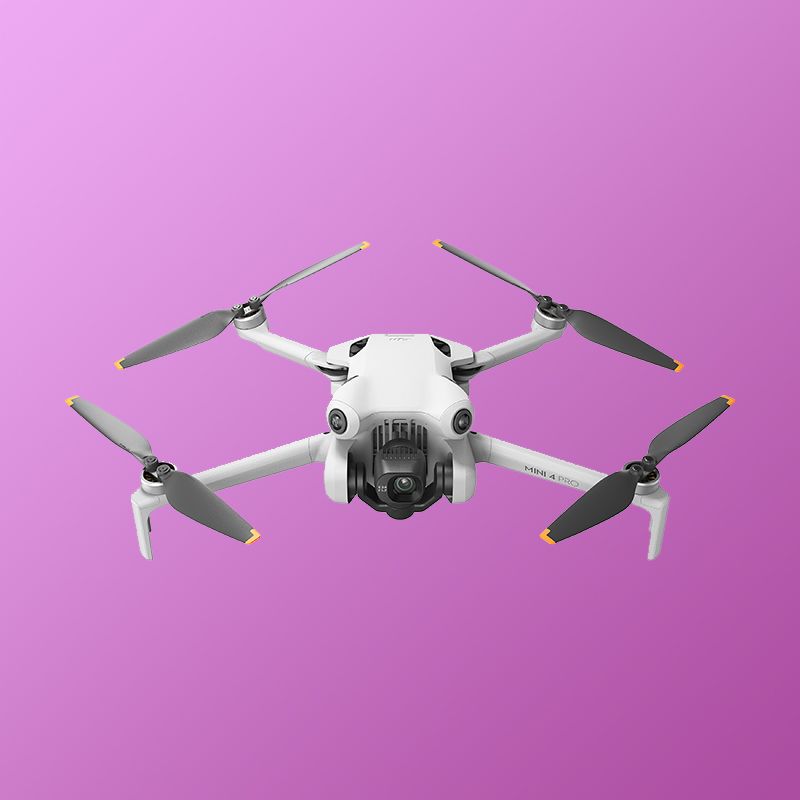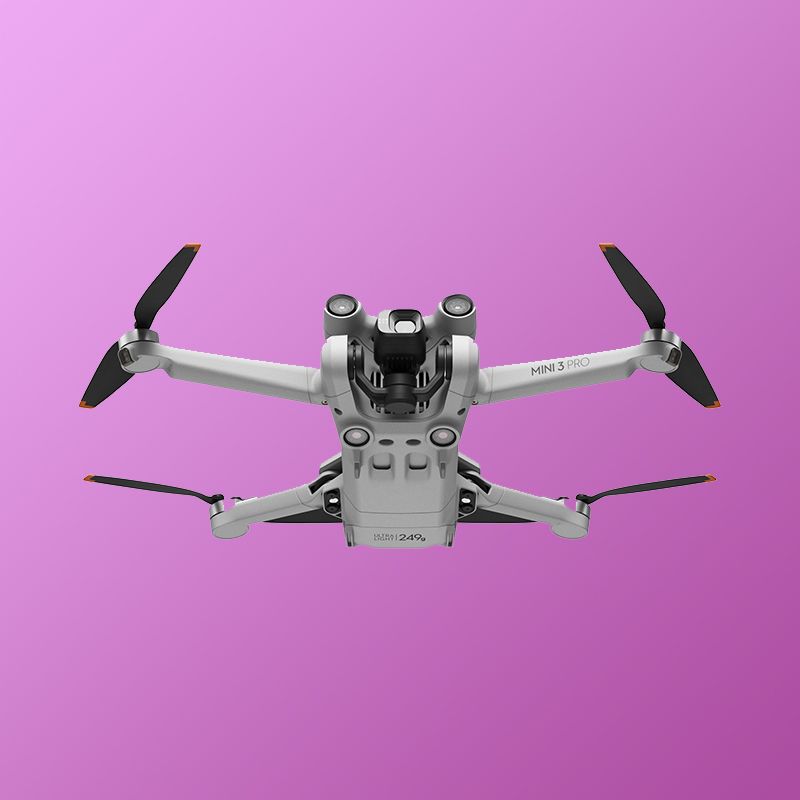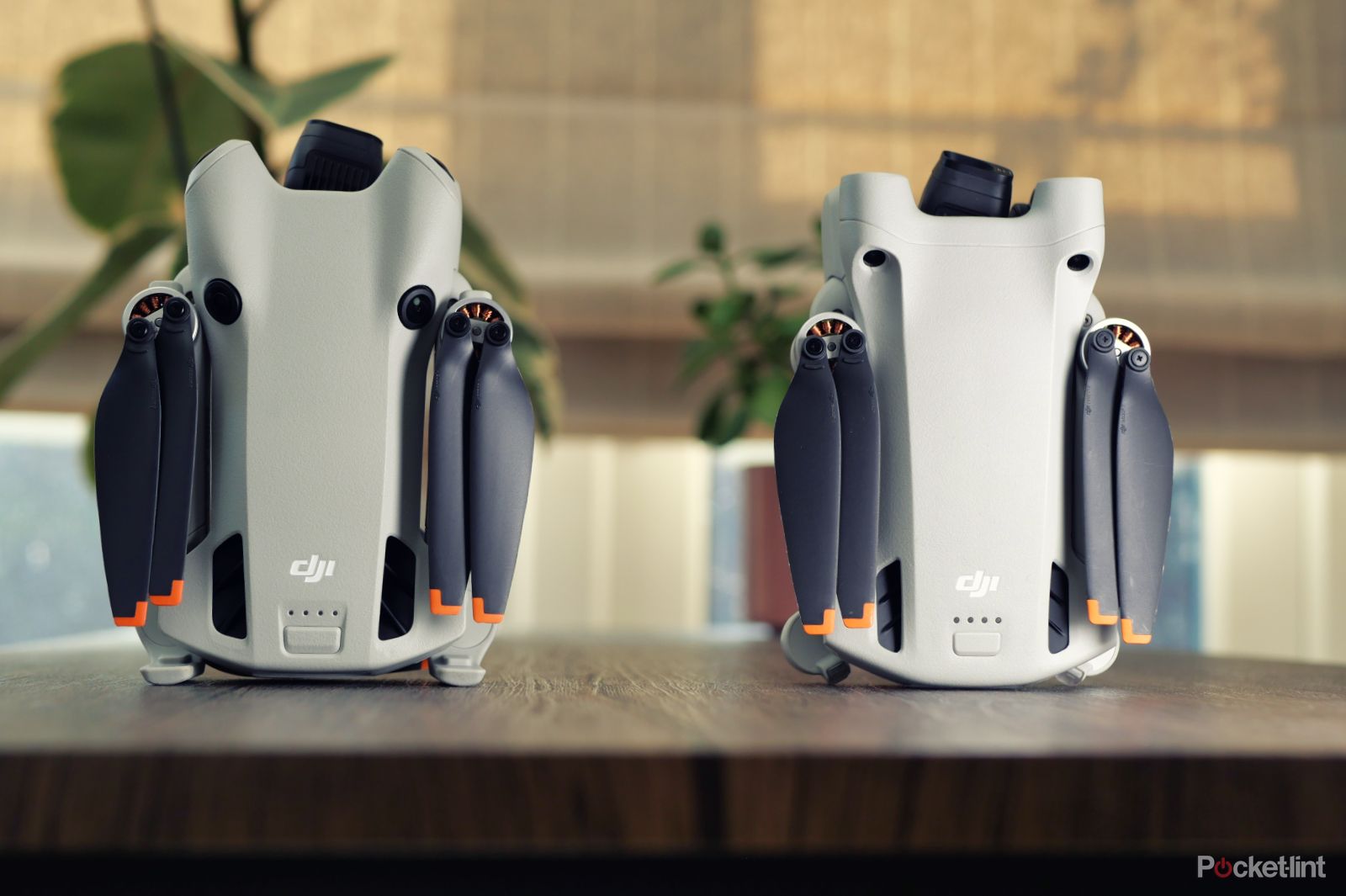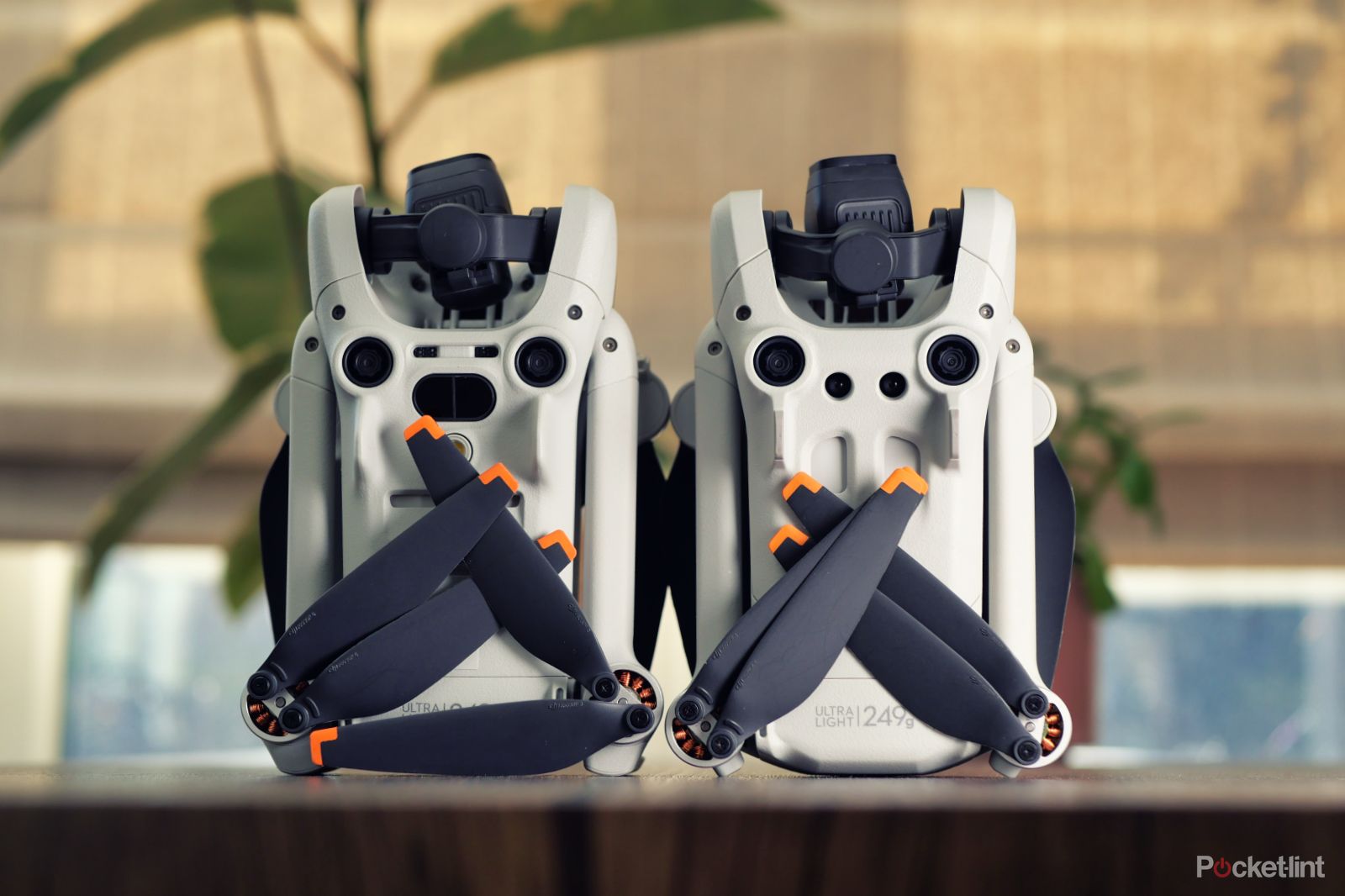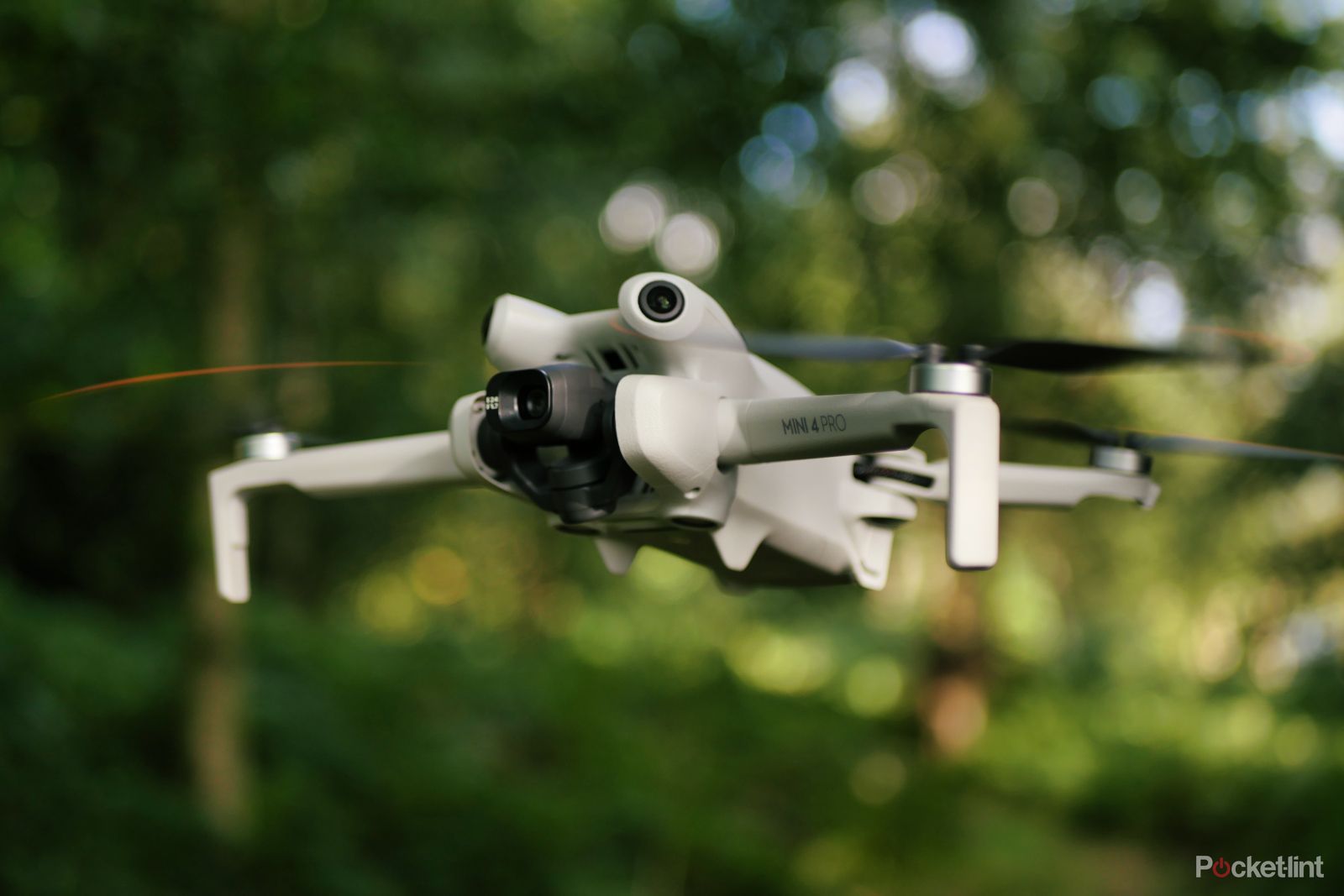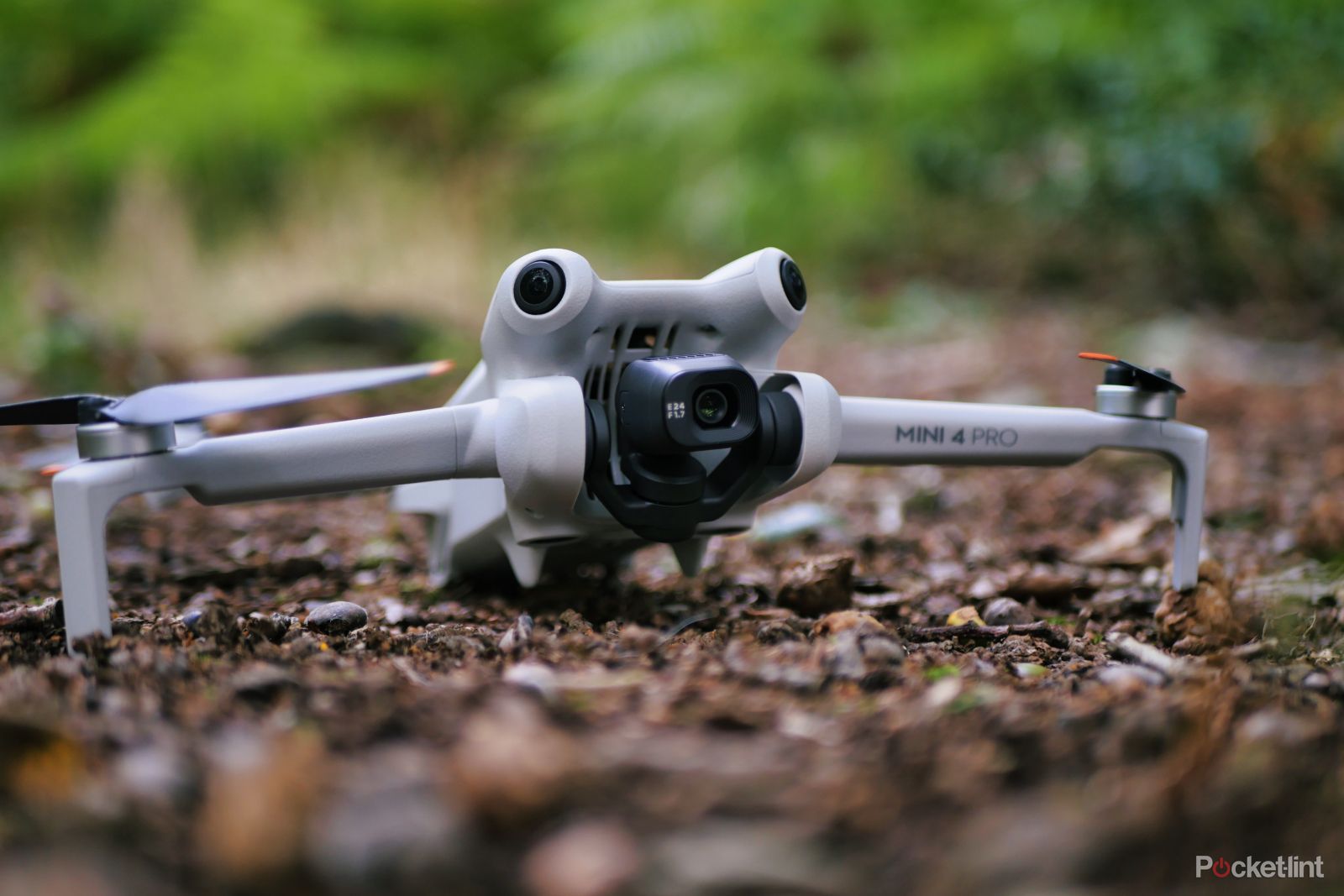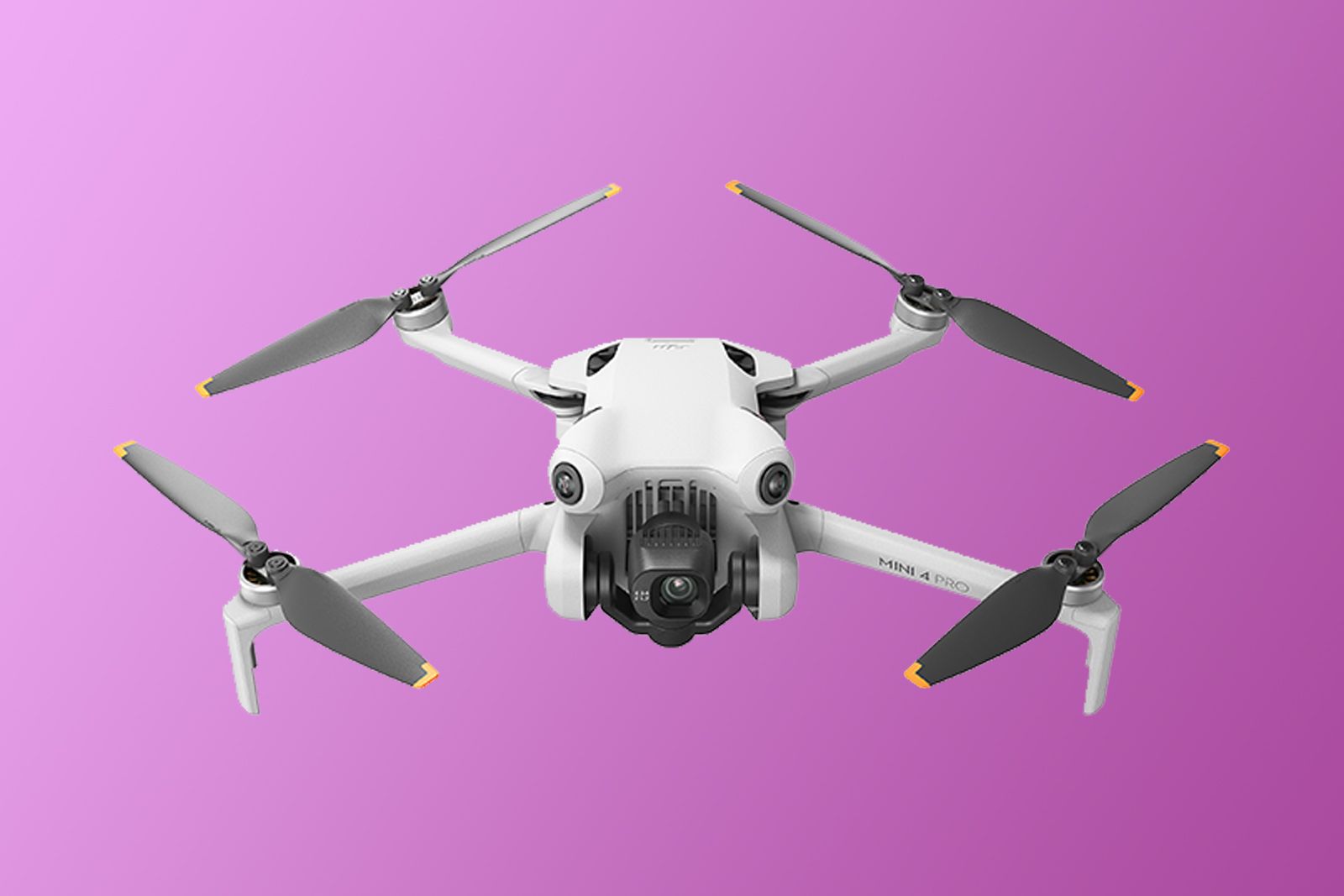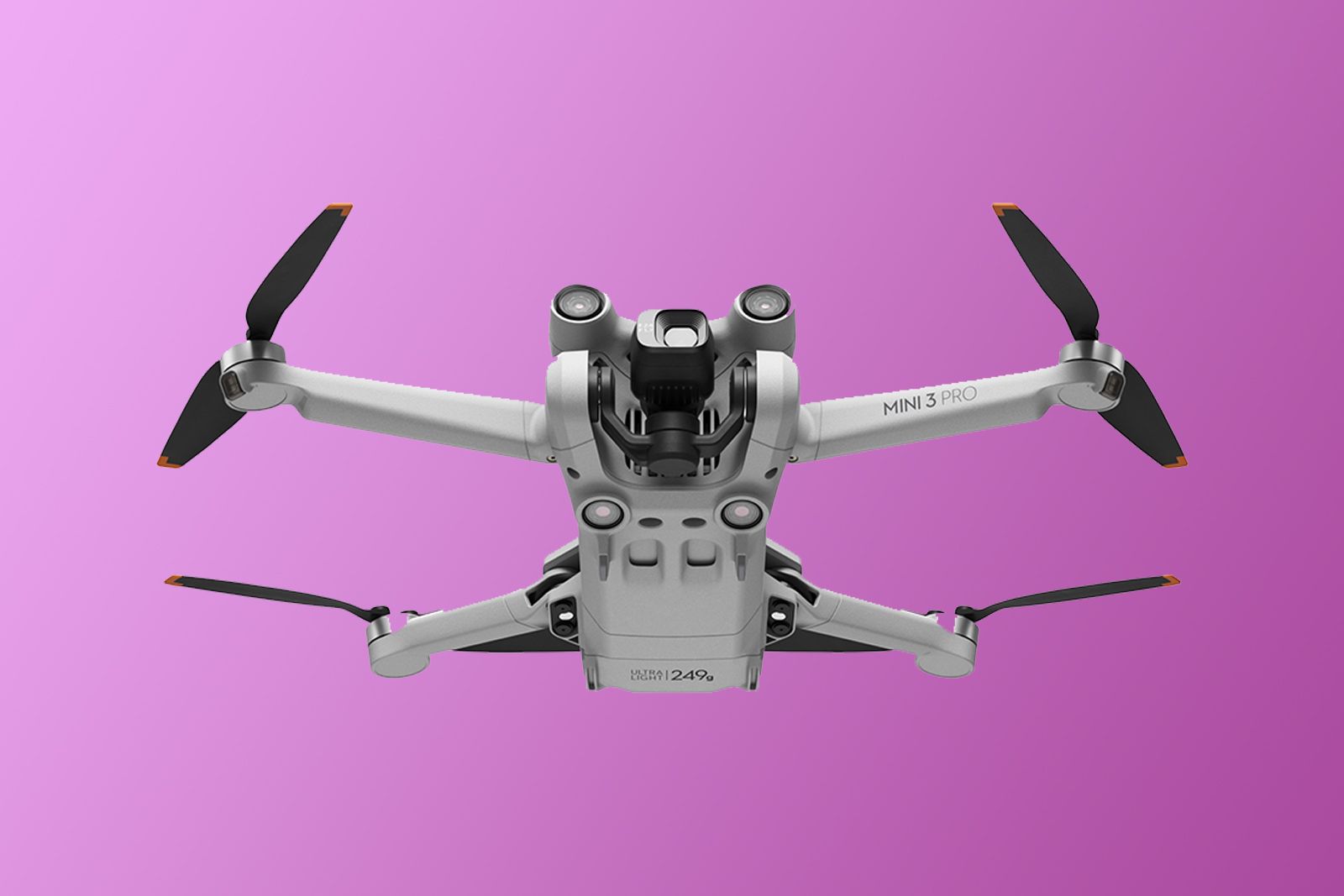- DJI
DJI Mini 4 Pro
The best of the bestDJI's latest Mini drone builds on the success of its predecessor. It's not wildly different, but it offers omnidirectional obstacle avoidance, improved slow-motion, waypoint flights and a D Log M colour profile. These new features add up to create DJI's most enticing Mini drone yet.
Pros- 4K100 video recording
- Omnidirectional obstacle avoidance
- 60fps HDR and D Log M
Cons- Likely to cost you more
- DJI
DJI Mini 3 Pro
Still brilliantThe DJI Mini 3 Pro is still an excellent option, particularly if you find it at a good price. It flies exactly like the newer model plus it has the same sensor and lens combination, so you can capture almost identical images. If you opt for the Mini 3 Pro, just be careful when flying sideways, as the obstacle avoidance has a blind spot.
Pros- Available for less money
- Same excellent sensor
- Similar flight performance
Cons- Maxes out at 4K60
I haven't been shy about my love of the DJI Mini 3 Pro, it's tiny and portable but still packs enough professional features to be used for serious video work. It doesn't exactly come cheap, but when compared to some of the Mavic series, it seems like a bit of a bargain.
Now, the Mini 4 Pro has arrived, and it has all the makings of our next favourite drone. At a glance, though, the two models look quite similar, and the spec sheet reads similarly, too. So, what's changed with DJI's latest Mini drone? Let's dig in.
Specs, price and availability
The DJI Mini 3 Pro launched in May 2022 and has been available to purchase ever since. It carries an MSRP of $759 with the RC-N1 remote, $909 with the DJI RC remote and the Fly More Combo is available separately for an additional $189.
The DJI Mini 4 Pro was announced on September 25 2023, and is available to purchase now. You can select from a variety of packages, and here's how they break down:
- DJI Mini 4 Pro with RC-N2 - $759
- DJI Mini 4 Pro with DJI RC 2 - $959
- DJI Mini 4 Pro Fly More Combo with DJI RC 2 - $1099
DJI Mini 4 Pro DJI Mini 3 Pro Camera 1/1.3-inch CMOS - 24mm f/1.7 1/1.3-inch CMOS - 24mm f/1.7 Speed 16m/s 16 m/s Weight 249g 249g Range 20km transmission distance 12km transmission distance Connectivity DJI O4 system DJI O3 system Battery 2590 mAh 2453 mAh Dimensions Unfolded: 298×373×101 mm Unfolded: 251×362×70 mm Video Resolution Up to 4K100 Up to 4K60 Color Profiles Normal / D-Log M Normal / D-Cinelike Max Wind Speed Resistance 10.7m/s (level 5) 10.7m/s (level 5)
Design
Outwardly, the DJI Mini 4 Pro and Mini 3 Pro look quite similar, they're both about the same size and they both weigh just a hair under 250g - in order to swerve drone regulations in the majority of countries.
There are, however, a few things that give away the DJI Mini 4 Pro's new capabilities. The new obstacle avoidance sensors are the most obvious, which now have bulbous fisheye lenses and are positioned at an angle rather than head-on. This is an ingenious bit of engineering from DJI, as now the drone has full 360-degree coverage using the same amount of sensors as its predecessor.
There's now a light on the bottom, too. This looks a lot like the light that's found on the base of the Air 3, it's just scaled down for the tiny chassis. In use, it's designed to make low-altitude hovering more stable in low-light conditions.
Also new on the DJI Mini 4 Pro is the addition of landing feet on the front arms. The design now matches its larger siblings more closely, and this is an excellent change. I can't tell you how many times my Mini 3 Pro has toppled over when trying to take off on an uneven surface, this new design should be much more stable.
This time around, there are new remotes, but for the most part, they work exactly the same as the older versions. The DJI RC 2 now has fold-out antennas, like the DJI RC Pro, but otherwise, the buttons, display and everything else remain the same. It's worth noting that these controllers aren't cross-compatible though, so if you invested in the DJI RC version of the Mini 3 Pro, you won't be able to use it with the new model - which is a bit of a shame.
Flight features
When it comes to flight performance, the two drones have very similar characteristics. They both offer the same level of wind resistance and the same top speed, given that they're of a similar size and weight, the stability is about the same, too. The battery capacity is marginally larger on the DJI Mini 4 Pro, but it offers the same maximum flight times as well.
What's new, though, is the addition of DJI's O4 FHD video transmission system. This means you can fly much further before losing signal, up to 20km in some regions. It's worth noting that in Europe, you're limited to 10km, which is an improvement over the Mini 3 Pro's 8km, but less drastic than what you'll experience in the States.
It's a similar story with the Intelligent Flight Battery Plus. This is an optional extra that can be used to achieve up to 45-minute flights, but it pushes you over the 250g mark, and it's not sold in Europe for some reason. Interestingly, this is 2 minutes less than what was advertised with the DJI Mini 3 Pro, but it's still plenty of flight time.
Arguably the biggest difference in flight is the fact that the Mini 4 Pro has omnidirectional obstacle avoidance, whereas the Mini 3 Pro only detects obstacles above, below and at the front and rear. This means that you can confidently fly sideways without worrying about clocking your drone into a tree trunk.
The Mini 4 Pro also adds support for waypoint flights, which means your drone can accurately repeat flight paths autonomously. In my view, it's less fun than manning the sticks yourself, but it has some great utility for timelapses and VFX work.
Camera features
Both drones feature the same sensor and lens combination, which means that they're essentially capable of capturing the same quality images and footage. There are, however, a few areas where the Mini 4 Pro has the advantage.
Firstly, the Mini 4 Pro can shoot at higher framerates in 4K. It now supports up to 100fps recording, compared to just 60fps on the DJI Mini 3 Pro. This is great for capturing slow-motion action scenes, and it now matches the Air 3 in slow-motion capabilities.
In addition, HDR video has been improved, and you can now shoot HDR at up to 4K 60fps, compared to 4K 30fps on the older model.
While the Mini 3 Pro offers 10-bit colour capture, its flattest picture profile is D-Cinelike. This is a decent profile for colour grading, but it's not as flexible as D-Log M which is found in DJI's larger drones. Thankfully, the Mini 4 Pro benefits from the D-Log M profile, so it's now much easier to mix footage from the Mini 4 Pro and Mavic 3 Pro, for example.
Another big change comes thanks to the new obstacle avoidance sensors. Rather than just allowing for basic ActiveTrack, the Mini 4 Pro has full-featured ActiveTrack 360, just like the pricier drones in DJI's lineup. This means you can autonomously follow a subject from essentially any angle and the new sensors will keep your drone safe in the process.
Conclusion
The Mini 4 Pro is clearly the superior option, mainly owing to the new omnidirectional obstacle sensors, the addition of HDR video at 4K60, and better slow motion in 4K. There's also the addition of the D-Log M profile, which is sure to excite colourists and professional users.
That said, the DJI Mini 3 Pro has the same camera system and very similar flight characteristics, so it's still plenty relevant in 2023. If you see a good deal, it could make more sense to opt for the older model, especially if you won't take advantage of the new features.
Really, you can't go wrong with either option, they're two of the most feature-packed mini drones on the market today. We'd advise picking the Mini Pro 4 if you want to be on the cutting edge, but if you want to save some money, there will likely be some great savings to be had with the Mini 3 Pro.

